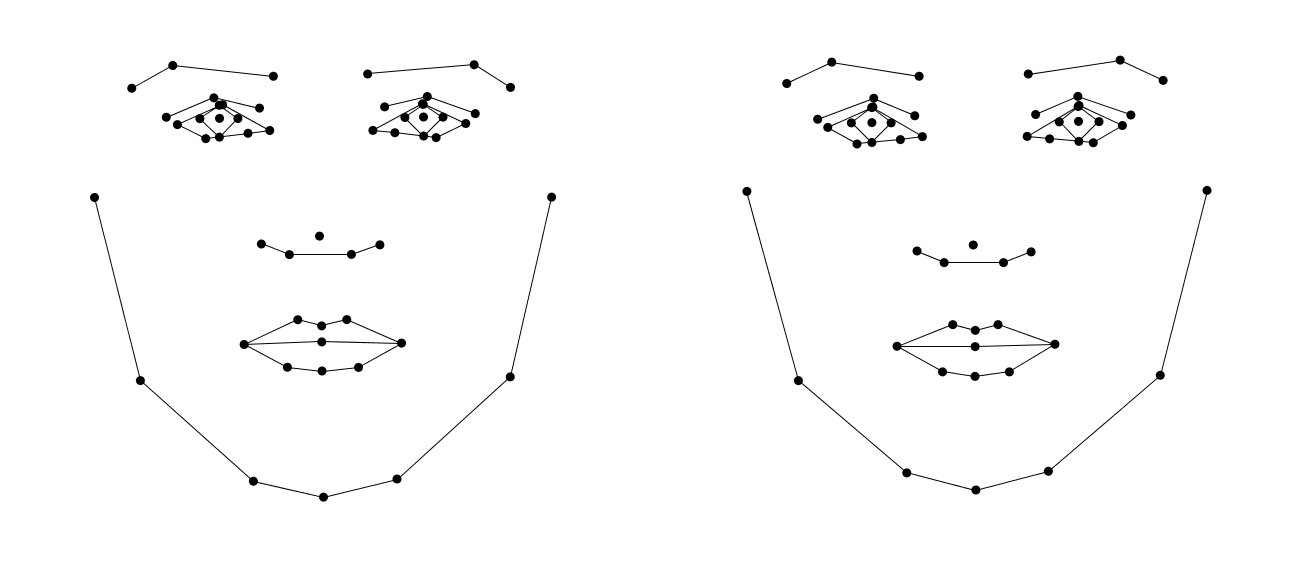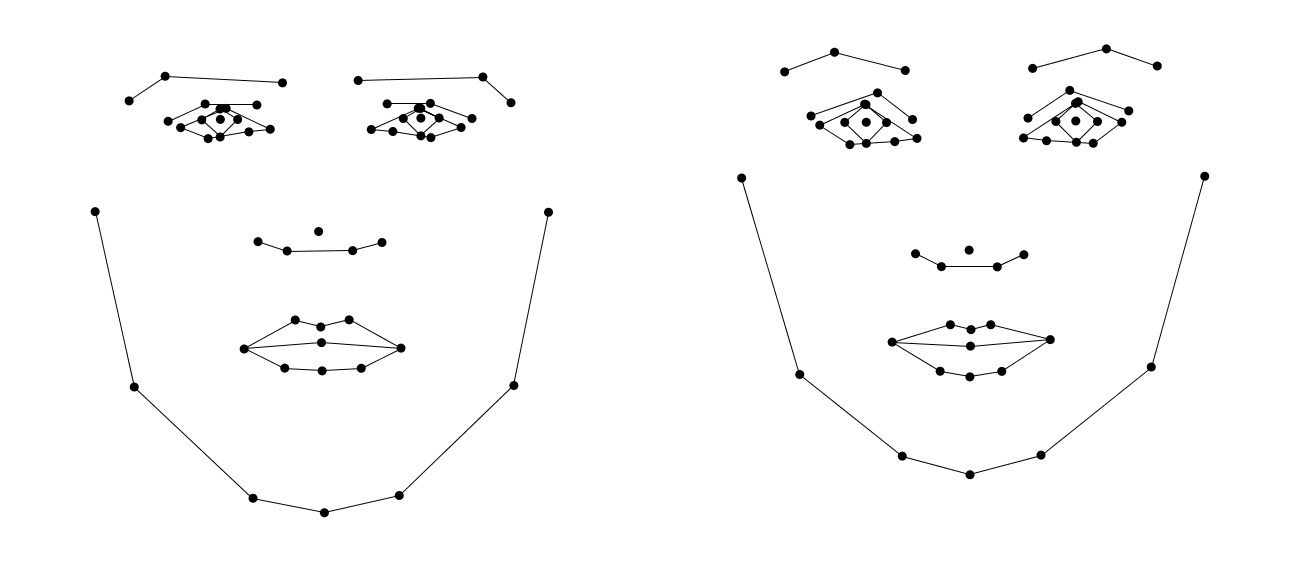Analysis of face shape
Differences in shape can be statistically assessed and visually described using geometric morphometrics (GMM). For example, the face shapes of two groups can be landmarked and then compared for significant differences. Below is a simple example illustrating the shape difference between sexes. The actual differences in face shape may be more subtle than you would expect:

One can sometimes get a better visualisation of the differences by exaggerating them (below, 3.5x):

It is easy to see here the lowered browline and larger jaw in men compared to women. Given the joint influence of sex hormones on appearance and behaviour (especially during development), an open question is whether dimorphism in shape is correlated with behaviour. The shape scores obtained for each individual in this case could be used to predict their behaviour on traits that are sex-linked, for example, autistic quotient scores (AQ, men at higher risk) or depression (women at higher risk).